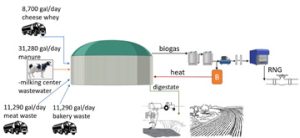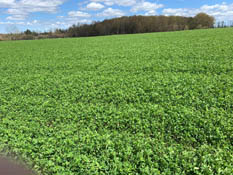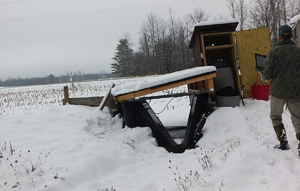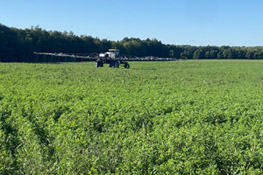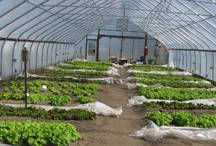How to Rear Your Own Nematodes On-Farm (waxworm cups method) Instructional Resources
Please reference the instructional manual and videos below on how to rear your own nematodes for application on your farm. Before you begin, you will need to look at the required materials list and rearing timeline in the manual).
- Rearing and Applying Biocontrol Nematodes Manual, 2016 (PDF)
- Sprayer Requirement Manual
- Rearing Nematodes (waxworm cup method) (Brochure PDF)
- For wax moth larvae and other supplies (see instructional videos), contact your local Cornell Cooperative Extension office for assistance identifying current suppliers
VIDEO SERIES:
How To Rear and Apply Your Own Biocontrol Nematodes
produced by Cornell Cooperative Extension and the Shields Lab, 2012
Note: these videos highlight the initially developed waxworm cup method for rearing the persistent biocontrol nematodes with a variety of field applications. It is advisable to contact your Cornell Cooperative Extension office for assistance and instruction before beginning. For those who do not wish to raise their own nematodes, an NNYADP persistent biocontrol nematode project-trained supplier and custom applicator is based in northern NY. Ask your Cornell Cooperative Extension for additional assistance.
Life Cycle of Entomopathogenic Nematodes: How this biocontrol works in the soil (1:20 minutes)
Overview of How to Rear and Apply Your Own Entomopathogenic Nematodes: waxworm cup method (2:14 minutes)
Calculating Number of Nematodes Needed for Preparation for Your Field Release (4:38 minutes)
Calculating Cups/Field, Solution Dilution, Coverage Rate… (3:18 minutes)
Timeline, Materials & Supplies Needed for Rearing Nematodes & Application(11:49 minutes)
Where to Find Supplies for On-Farm Cup Method Rearing of Biocontrol Nematodes and Preparation for Field Application (4:29 minutes)
ASB Publications & Book Chapters: partial list of work published through 2016
Testa, A. M. and J. Shields. 2016. Low Labor “In Vivo” Mass Rearing Method for Entomopathogenic Nematodes. Biocontrol. (submitted)
Taylor, R.A.J., and J. Shields. 2016. Revisiting Potato Leafhopper, Empoasca fabae, Migration: Implications in a world where invasive insects are all too common. American Entomologist. (submitted)
Smith, E. A., J. Shields and B. A. Nault. 2016. Impact of adjacent habitat on colonization of onion fields by adult onion thrips (Thysanoptera: Thripidae). J. Econ Entomol. (submitted)
Smith, E. A., J. Shields and B. A. Nault. 2016. Impact of abiotic factors on onion thrips (Thysanoptera: Thripidae) dispersal activity in an onion ecosystem. Environ. Entomol. (submitted)
Smith, E. A., M. Fuchs, J. Shields and B. A. Nault. 2015. Long-distance dispersal potential for onion thrips (Thysanoptera: Thripidae) and Iris yellow spot virus (Bunyaviridae: Tospovirus) in an onion ecosystem. Environ. Entomol. 44: 921-930.
Keller, M. D. and J. Shields. 2014. Aerobiological sampling efficiency of media-containing Petri plates for use in lower atmosphere spore collection. Aerobiologia 30 : 103-109 (Published online 6/18/13)
Keller, M. D. G. C. Bergstrom and J. Shields. 2014. The Aerobiology of Fusarium graminearum. Aerobiologia. 30: 123-136. (Published online 11/5/13)
Goulet, E. J., A. Ditommaso and J. Shields. 2014. Comparative study of Mecinus janthinus (Coleoptera: Curculionidae) attack and simulated mowing for control of Linaria dalmatica (Scrophulariaceae). The Great Lakes Entomologist 47: 12-22.
Nansen, C, B. Stokes, J. James, P. Porter, J. Shields, T.Wheeler, W. G. Meikle. 2013. Biological control agent of larger black flour beetles – a nuisance pest developing in cotton gin trash piles. J. Econ. Entomol. 106: 648-652.
Petzold-Maxwell, J. L. , A. P. Alves , R. E. Estes , E. Gray, L. J. Meinke, E. J. Shields, S. D. Thompson, N. A. Tinsley and A. J. Gassmann. 2013. Applying an integrated refuge to manage western corn rootworm (Coleoptera: Chrysomelidae): Effects on survival, fitness and selection pressure. J. Econ. Entomol. 106: 2195-2207.
Goulet, E. J., J. Thaler, A. Ditammaso, M. Schwarzlander, J. Shields. 2013. Impact of Mecinus janthinus (Coleoptera: Curculionidae) on the growth and reproduction of Linaria dalmatica (Scrophulariaceae). The Great Lakes Entomologist 46: 90-98.
Neumann, G. & J. Shields. 2011. Long term field persistence and coexistence in three entomopathogenic nematodes, Steinernema carpocapsae Weiser, S. feltiae Filipjev, and Heterorhabditis bacteriophora Poinar. The Great Lakes Entomologist 44: 42-52.
Shields, E. J., and A. M. Testa. Effects of Low Temperature Storage on Fecundity and Adult Mortality for the Alfalfa Snout Beetle, Otiorhynchus ligustici (L.) (Coleoptera: Curculionidae). The Great Lakes Entomologist 44: 21-31.
Aylor, D. E, D G. Schmale III, J. Shields, M. Newcomb and C. J. Nappo. 2011. Tracking the potato late blight pathogen in the atmosphere using unmanned aerial vehicles and Lagrangian modeling. Agric. For. Meteorol. 151: 251-260.
Sappington, T. W., K. R. Ostlie, C. DiFonzo, B. E. Hibbard, C. H. Krupke, P. Porter, S. Pueppke, E. J. Shields and J. J. Tollefson. 2010. Conducting public-sector research on commercialized transgenic seed: In search of a paradigm that works. GM Crops 1 (2): Online open access article (http://www.landesbioscience.com/journals/gmcrops/article/10833)
Shields, E. J., A. Testa, G. Neumann, K. L. Flanders and P. C. Schroeder. 2009. Biological Control of Alfalfa Snout Beetle with a multi-species application of locally-adapted persistent entomopathogenic nematodes: The first success. American Entomologist 55: 250-257.
VanGessel. 2009. Conyza canadensis seed ascent in the lower atmosphere. Agricultural and Forest Meteorology 149: 526-534.
Neumann, G. & E. J. Shields. 2008. Multiple-species natural enemy approach for the biological control of the alfalfa snout beetle, Otiorhynchus ligustici L. (Coleoptera: Curculionidae), using entomopathogenic nematodes. J. Econ Entomol 101: 1533-1539.
Shields, E. J., G. Neumann and A. Testa. 2007 (published in 2008). Alfalfa Snout Beetle, Otiorhynchus ligustici L. (Coleoptera: Curculionidae): Methods for egg collection and larval rearing. The Great Lakes Entomologist 40: 62-67.
Neumann, G. & E. J. Shields. 2006. Interspecific interactions among three entomopathogenic nematodes, Steinernema carpocapsae, S. feltiae, and Heterorhabditis bacteriophora, with different foraging strategies for hosts in multi-piece sand columns. Environ. Entomol. 35: 1578-1583.
Book Chapters:
- Hower, A. A. and J. Shields. Weevils and Root Borers. In: Lamp, W.O., R. Berberet, Higley, and C. Baird (eds.). 2007. Handbook of Forage and Rangeland Insects. Entomological Society of America, Lanham, MD.
- Shields, E. J. and A. A. Hower. Rootweevils of Alfalfa. In: Lamp, W.O (ed). 2012 Alfalfa Compendium. American Phytopathological Society.
- Shields, E. J. Ch 6 – Utilizing persistent EPNs in a conservation or a more classical biological control approach. In: R. Campos-Herrera (ed). Nematode pathogenesis of insects and other pests – ecology and applied technologies for sustainable plant and crop protection, Series: Sustainability in Plant and Crop Protection, Vol. 1 (R. Campos-Herrera ed). Springer. 2015. Pp. 165-184.
- Shields, E. J. and A. M. Testa. Ch 11 – New York Case Study: Biological Control of ligustici with native persistent EPNs using a more classical approach. In: R. Campos-Herrera (ed). Nematode pathogenesis of insects and other pests – ecology and applied technologies for sustainable plant and crop protection, Series: Sustainability in Plant and Crop Protection, Vol. 1 (R. Campos-Herrera ed). Springer. 2015. pp 285-307.
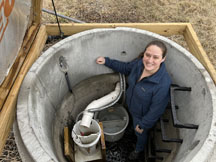
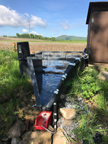
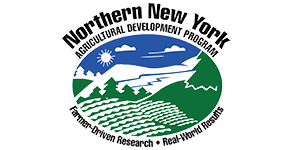 Funding for the Northern New York Agricultural Development Program is supported by the New York State Legislature through the New York State Assembly and administered by the New York State Department of Agriculture and Markets.
Funding for the Northern New York Agricultural Development Program is supported by the New York State Legislature through the New York State Assembly and administered by the New York State Department of Agriculture and Markets.